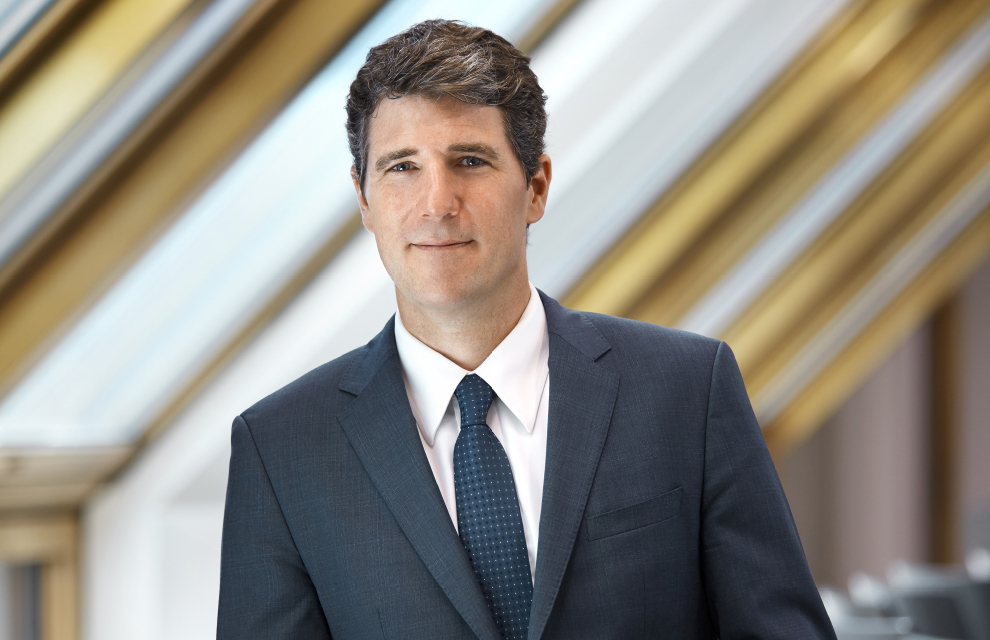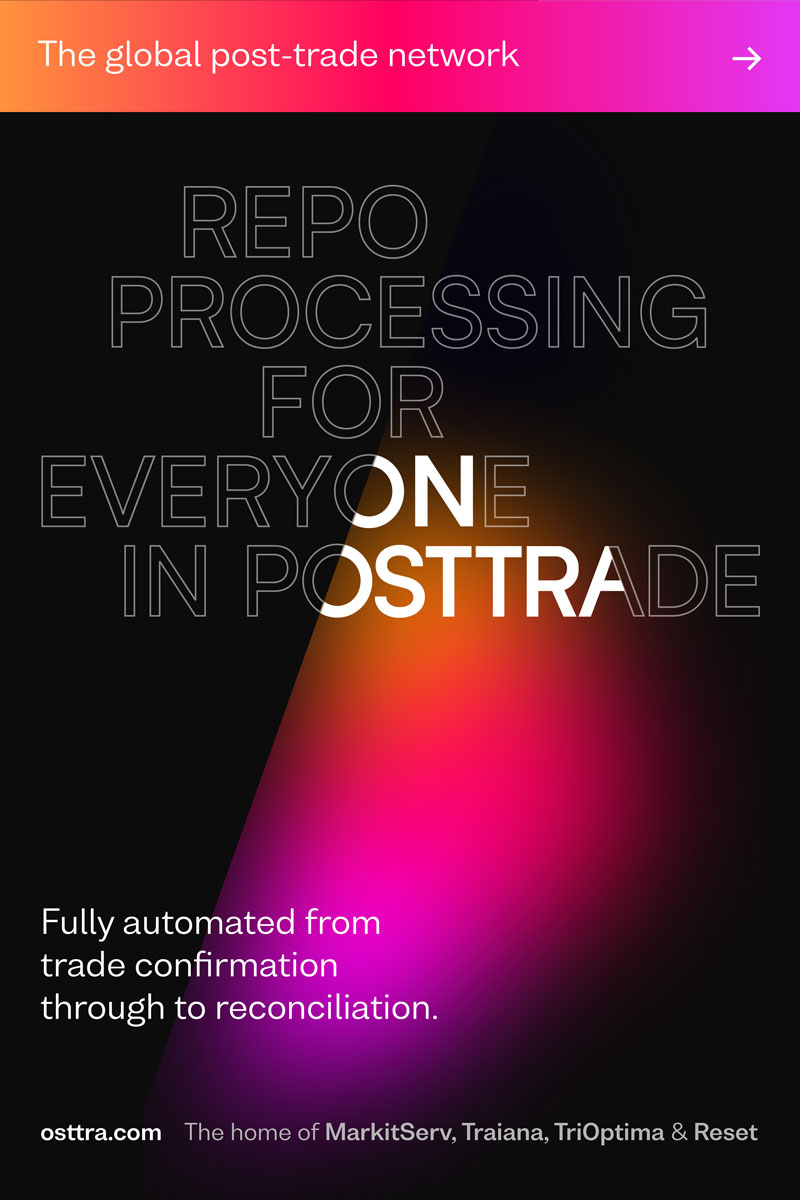Norges Bank Investment Management
Norges Bank Investment Management’s global head of financing Matthew Brunette discusses its long history of lending, its new ESG policy, and why it never got behind central clearing
How long has Norges Bank had a securities lending programme and how has it changed over the years? What are its core characteristics now?
Our approach to securities lending is no different to our approach to any other investment strategy. We seek to identify our competitive advantages in specific areas and then develop relevant skills through research, practical experience and experimentation. Early on in our history, we did not have the capacity to purchase specific expertise in the market. Instead, we focused on recruiting capable but inexperienced individuals without preconceived notions of how to manage investment risk. We gave them the freedom and mandate to develop their products in their own way, but firmly anchored in academic research. We sought scalable strategies, but typically started small as we did not always get it right the first time. We then gradually built up risk and competence in tandem over time.
We decided early on to lend securities to increase the fund’s return. We saw that securities lending would provide the fund with additional revenue by actively monetising our large, diversified portfolio of securities. When we started lending our equities in 1998, the equity portfolio was entirely managed by external index managers. The fund’s custodian, JPMorgan Chase, was appointed to manage securities lending across all our equity portfolios, as our agent lender.
A custodial agent is not the only solution to outsourcing a lending programme. There are also many third-party lending specialists. When we reviewed the options for our custodian setup in 2014, we made the decision not to consider third-party agents. A third-party agent depends on communication and co-operation with the custodian for trade notifications and corporate action elections to manage the recall and asset servicing processes. In addition to adding another step into each of these processes, these two providers are typically direct competitors and are not necessarily incentivised to work together. For the size and breadth of our investment activities, we felt there were better controls achieved by keeping agency lending within the custodial service relationship.
As our securities lending programme is outsourced to an agent, we have had to deal with the risk of differential treatment. As the fund has grown, we have become an important partner to our agent. The risk to us has been that other clients, paying higher fees, might be allocated a higher share of lending demand. To alleviate this risk, we have sought to develop our direct counterparty relationships and push for more transparency in the market. Another downside of outsourcing is that we give up some control of the strategic development of the product. Investors are primarily interested in solutions that work best for them individually, whereas the agent needs to consider strategies that benefit its entire client base. We have partnered with our agent in this development, but typically find that shorter-term industry sponsored development is more achievable than our own longer-term goals.
In some cases, such as synthetic lending, we have insourced the operational build to achieve our goals, while in others, such as peer-to-peer lending, we have taken the lead with potential partners in building a business case and scalable model that can be adopted by other lenders.
In 2012, we introduced a 0.25 per cent minimum fee for equity lending transactions. By doing this, we reduced our gross counterparty exposure by around 50 per cent at an opportunity cost of less than 10 per cent of total revenue, by eliminating high-value transactions with low fees. Our priority has been to develop differentiated products or markets where we can harvest high fees, rather than lending a large share of our portfolio for low fees. This has enabled us to recapture some of the revenue at a greater spread by offering term funding trades or synthetic lending on similar assets.
Norges first took a step away from being fully indemnified in 2005 when it began accepting equities as collateral, and then scrapped indemnities all together in 2016. What was the main driver behind this strategy and how have you fared since?
To ensure we remained in control of the development of our securities lending programme, and to marginally reduce costs, we decided to discontinue all indemnification from our lending agent in October 2016.
The balance sheet constraints of our securities lending agent, also affected by more stringent regulatory requirements, would otherwise have hampered the development of new products and trade structures.
This transition to insourcing all securities lending counterparty default risk was the result of several years of work to build a data structure and portfolio monitoring tools for securities lending exposure. We took these steps incrementally, and only once we had developed the expertise and tools to manage these risks ourselves.
Does Norges apply any ESG considerations directly onto its lending programme?
In order to meet our responsibilities as a shareholder, our largest investments and companies where we are among the largest shareholders are generally excluded from the lending programme. We have maintained this rule since January 2007.
Nor do we lend shares where our portfolio managers and corporate governance analysts are engaged in a potentially impactful vote as we want to avoid a recall with potential market impact at a critical time for the company.
The list of such restrictions is reviewed twice a year, and on average there are between 100 and 200 securities that we restrict from lending at any given time.
Additional governance issues will arise throughout the year, prompting ad-hoc voting requests from portfolio managers and analysts. We will review the on-loan position with our agent and determine the market impact of the recall, relevant record date and appropriate timeframe before reverting to the corporate governance team with feedback and a recall plan.
Furthermore, we always retain some shares in each company to ensure we can participate and vote in all general shareholder meetings. When additional governance issues arise throughout the year we will review the on-loan position with our agent and assess the market impact before determining a recall plan.
Lastly, collateral parameters of our securities lending programme follows the same investment universe as our investments.
Norges joined the Global Peer Financing Association in December 2020. What drove this?
GPFA has established a forum for beneficial owners to discuss market best practice and development in the securities lending industry. We want to be part of this dialogue.
Norges conducted its first peer-to-peer loan last year. Do you see this as a growth area for your lending programme? Could it ever make up a significant portion of your SBL transactions?
Yes and yes. This is a strategic priority, and what we believe to be a natural evolution of the market. Highly-rated banks and prime brokers will continue to be our primary counterparties, but we expect incremental growth to come from peer transactions.
Norges has so far resisted putting business through a CCP. Talk us through this thought process and could you ever see yourself becoming pro-CCP?
The primary reason why we have rejected industry initiatives to route securities lending transactions via central counterparties (CCPs) is that their fragmented structure detracts from a diversified, nettable risk portfolio by creating silos of segregated risk exposures for the lender.
In addition, we are not comfortable outsourcing our investment risk management as a matter of principle.
In 2005, Norges gave approval for a short-term bond fund, but this was never executed as part of the agent lender’s mandate. What happened?
In the period leading up to the financial crisis in 2008, the reinvestment of cash collateral became an increasingly popular vehicle for lenders to increase their returns. Securities lending desks became significant investors in commercial paper, corporate debt and asset-backed securities.
We assessed, but never implemented, a strategy to increase returns from the reinvestment of cash in equity lending transactions.
In 2005, approval was given for a short-term bond fund, but this was never executed as part of the agent lender’s mandate. We acknowledged that our equity lending department did not have the expertise to manage what was, in reality, a leveraged fixed-income portfolio.
This decision was significant and set us strategically apart from many of our industry peers at the time. Essentially the Norges Bank Investment Management organisation certainly had the competency, but we didn’t feel equity securities lending was the right place to manage this type of risk. The decision set us apart because most of our peers, especially in the US, disagreed.


